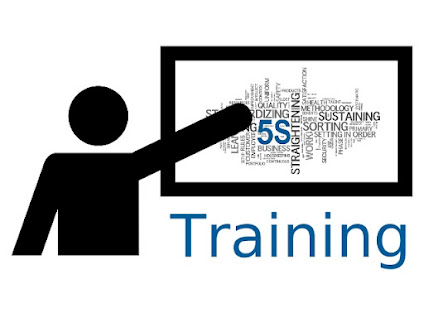Kaizen Training: 5 Key Strategies for Enhancing Workplace Efficiency
Kaizen training is a powerful tool
for improving workplace efficiency. It encourages employees to identify and
eliminate wasteful practices, while also helping them develop new skills that
can help improve their productivity. Kaizen training helps create an
environment of continuous improvement by encouraging employees to take
ownership of their work and strive for excellence in all aspects of the job.
Here are five key strategies for enhancing workplace efficiency through Kaizen Training:
1) Focus on
Process Improvement: By focusing on process improvement, you can identify areas
where processes are inefficient or need updating. This allows you to make
necessary changes that will increase overall productivity and reduce waste in
your organization's operations. Additionally, it gives employees the
opportunity to become more involved in problem-solving as they learn how
different processes interact with each other within the company structure.
2) Empower
Employees:
Kaizen Training encourages employee empowerment by giving them a voice when it
comes to making decisions about how things should be done at work – allowing
them to feel like they have some control over what goes on around them rather
than just following orders from management blindly. This sense of autonomy
contributes significantly towards improved morale amongst staff members which
leads directly to increased motivation levels resulting in greater success
rates overall!
3) Utilize
Data Analysis Tools & Techniques: Using data analysis tools such as
Lean Six Sigma or Kanban boards provides valuable insights into identifying
bottlenecks within production systems so that improvements can be made quickly
without disrupting current operations too much - thus saving time & money!
Additionally, these techniques allow managers/owners better visibility across
departments ensuring everyone is working together efficiently towards common
goals set out beforehand (ease communication).
Also Read: 7 QC Tools Training
4) Encourage
Collaboration between Departments: To ensure maximum efficiency throughout all
departments, it’s important to encourage collaboration between teams so
ideas/best practices can easily flow back and forth leading to successful
outcomes faster than if every team was operating independently (no sharing
info). Furthermore, this type of cooperation often leads to creativity due to
its ability to foster constructive criticism among colleagues who may otherwise
not have had a chance to brainstorm together previously - ultimately creating
an atmosphere of innovation that benefits the entire organization greatly going
forward!
5) Measure
Results Regularly: Finally measuring results regularly allows companies to
track the progress being made against targets set out before implementation
began; this ensures any issues occurring during the implementation stage are
addressed swiftly avoiding costly delays later down the line due to lack of
foresight planning ahead correctly initially! Allowing organizations access to
real-time data makes decision-making easier enabling quicker responses needed
when situations arise suddenly.
Also Read: Process Capability Training




Comments
Post a Comment